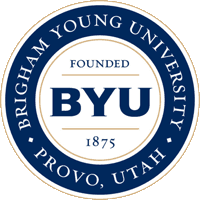Below is a summary of the abstract you submitted. Presenting author(s) is shown in bold.
If any changes need to be made, you can modify the abstract or change the authors.
You can also download a .docx version of this abstract.
If there are any problems, please email Dan at dar78@pitt.edu and he'll take care of them!
This abstract was last modified on March 11, 2021 at 7:07 p.m..

The Gordonia genus is closely related to Mycobacterium tuberculosis which is a leading cause of death worldwide. Mycobacterium tuberculosis is estimated to have currently infected a third of the world’s population and is resistant to many antibiotics. Many strains of Gordonia are also pathogenic, however, infections are rare and mostly affect the immunocompromised. Due to the close relation to Mycobacterium and Gordonia, it is possible to better understand the evolution of pathogenic strains through their analysis and comparison. In addition, phages which infect Gordonia may infect Mycobacterium, proving useful in phage therapy as well as for genome manipulation in research. Herein we describe the isolation and analysis of Gordonia phage SummitAcademy which was isolated in collaboration with a local high school, Summit Academy. Gordonia rubripertincta bacteria was used in enrichment cultures with soil and nutrient broth. After plating the culture, a plaque was picked and streaked several times to isolate a single phage. After the purified phage was brought to a 108 titer, the DNA was isolated, sequenced, and annotated using DNA Master and the phage was imaged using electron microscopy. DNA was successfully isolated for phage SummitAcademy using the Norgen phage DNA isolation kit and verified as a strong, bright band through gel electrophoresis, confirming that the DNA was of high quality and quantity. Sequencing of the SummitAcademy genome was conducted at BYU on an Illumina iSEQ and revealed a complete genome containing 74 genes, with a genome length of 47,325 base pairs. Success in isolating and sequencing the genome allowed for an in-depth annotation that revealed all encoded gene products and corresponding protein functions necessary for evaluating SummitAcademy’s potential in phage therapy as a treatment for M. tuberculosis infections. Electron microscopy images were also taken and showed that it was a member of the Siphoviridae phage family. These results, along with comparison of Summit Academy with previously isolated Gordonia phages will be presented.
